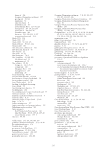18 – River and wetland health in the Lake Eyre Basin – an economic perspective 169 total economic value of $6.2–11.5 billion, with the increased 2800 GL of environmental water each year. This contrasts with the aggregate value of $4.4 billion (Centre for International Economics 2011), estimated for return of 3000 GL of environmental water each year. The increased valuation relates to increased knowledge of the considerably increased economic benefits from improving or maintaining environmental quality, through water reallocations. Implications for the Lake Eyre Basin There are challenges in valuing river and wetland health in the Lake Eyre Basin, with no previous environmental valuation studies. There is also no policy need to improve degraded wetlands and rivers, such as in the Murray–Darling Basin. But the principles remain the same. It is critical to understand the real economic values to the community of use and non- use environmental values, such as those identified in the Murray–Darling Basin (Table 18.6). Relatively few people live within the Lake Eyre Basin and so there are limited direct or indirect use economic values, except for grazing (see Chapters 10 and 11) and tourism (Chapter 13). However, the Lake Eyre Basin is a unique and iconic system and so there are likely to be significant non-use values. Some understanding of the potential economic values can be gained through benefit-transfer from the Murray–Darling Basin. For a free-flowing river system such as in the Lake Eyre Basin, the decision will primarily be whether to allocate water resources from the environment, such as irrigation or mining (see Chapter 22), and should be made using a cost–benefit analysis. There is high economic value from irrigation in the nearby Condamine ($457 million/ year) and Border Rivers ($245 million/year) in the Queensland (Nguyen et al. 2012) part of the Murray–Darling Basin. This gross value cannot simply equal the value of irrigation. It does not take account of the change in the productivity of the land from use of irrigation, nor does it take into account environmental costs. It also does not adequately measure the downstream impact on other economic uses of water (see Chapters 14 and 15) and neither does it adequately include the costs of building and maintaining large public infrastructure, such as dams or the costs of regulating and managing the river for irrigation. These are all government subsidies for irrigation. Currently, the economic value of irrigation is low from the Lake Eyre Basin rivers because of the relatively small amounts of active irrigation and absence of a large dam. The development of mining projects, including coal mines and coal seam gas (CSG) projects, could also affect the connectivity of wetlands and river flows (see Chapter 22), with other associated environmental costs, impacting on river health (see Chapter 19). Using Computable General Equilibrium (CGE) modelling, gross regional product was predicted to increase by about $470 million/year with the development of the CSG industry in north- west New South Wales (Williams et al. 2012) – an estimate which did not include environmental costs. Given the current understanding of the environmental values and costs of the Murray– Darling Basin development, environmental costs from development of the Lake Eyre Basin rivers will also be substantial. Use values, such as grazing, are substantial but remain largely unquantified, while non-use values are likely to be considerable given its iconic status (see Chapter 7). There are also considerable recreation values, given the amount of tourism and
Downloaded from CSIRO with access from at 216.73.216.128 on Nov 9, 2025, 9:10 AM. (c) CSIRO Publishing

















































































































































































































































































